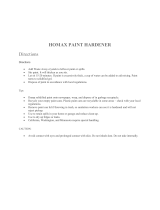Samsung CM1059A is a microwave oven with a range of features to make cooking easier and more convenient. It has a simple control panel with two dials, one for selecting the cooking power and the other for setting the cooking time. The oven also has a defrost function, which can be used to thaw frozen foods.
With its 10 power levels, you can choose the right power for the food you are cooking, from gently defrosting delicate items to quickly reheating leftovers. The ceramic plate inside the oven is easy to clean, and the oven's compact size makes it a great choice for small kitchens or apartments.
Samsung CM1059A is a microwave oven with a range of features to make cooking easier and more convenient. It has a simple control panel with two dials, one for selecting the cooking power and the other for setting the cooking time. The oven also has a defrost function, which can be used to thaw frozen foods.
With its 10 power levels, you can choose the right power for the food you are cooking, from gently defrosting delicate items to quickly reheating leftovers. The ceramic plate inside the oven is easy to clean, and the oven's compact size makes it a great choice for small kitchens or apartments.












-
 1
1
-
 2
2
-
 3
3
-
 4
4
-
 5
5
-
 6
6
-
 7
7
-
 8
8
-
 9
9
-
 10
10
-
 11
11
-
 12
12
Samsung CM1059A is a microwave oven with a range of features to make cooking easier and more convenient. It has a simple control panel with two dials, one for selecting the cooking power and the other for setting the cooking time. The oven also has a defrost function, which can be used to thaw frozen foods.
With its 10 power levels, you can choose the right power for the food you are cooking, from gently defrosting delicate items to quickly reheating leftovers. The ceramic plate inside the oven is easy to clean, and the oven's compact size makes it a great choice for small kitchens or apartments.
Ask a question and I''ll find the answer in the document
Finding information in a document is now easier with AI












